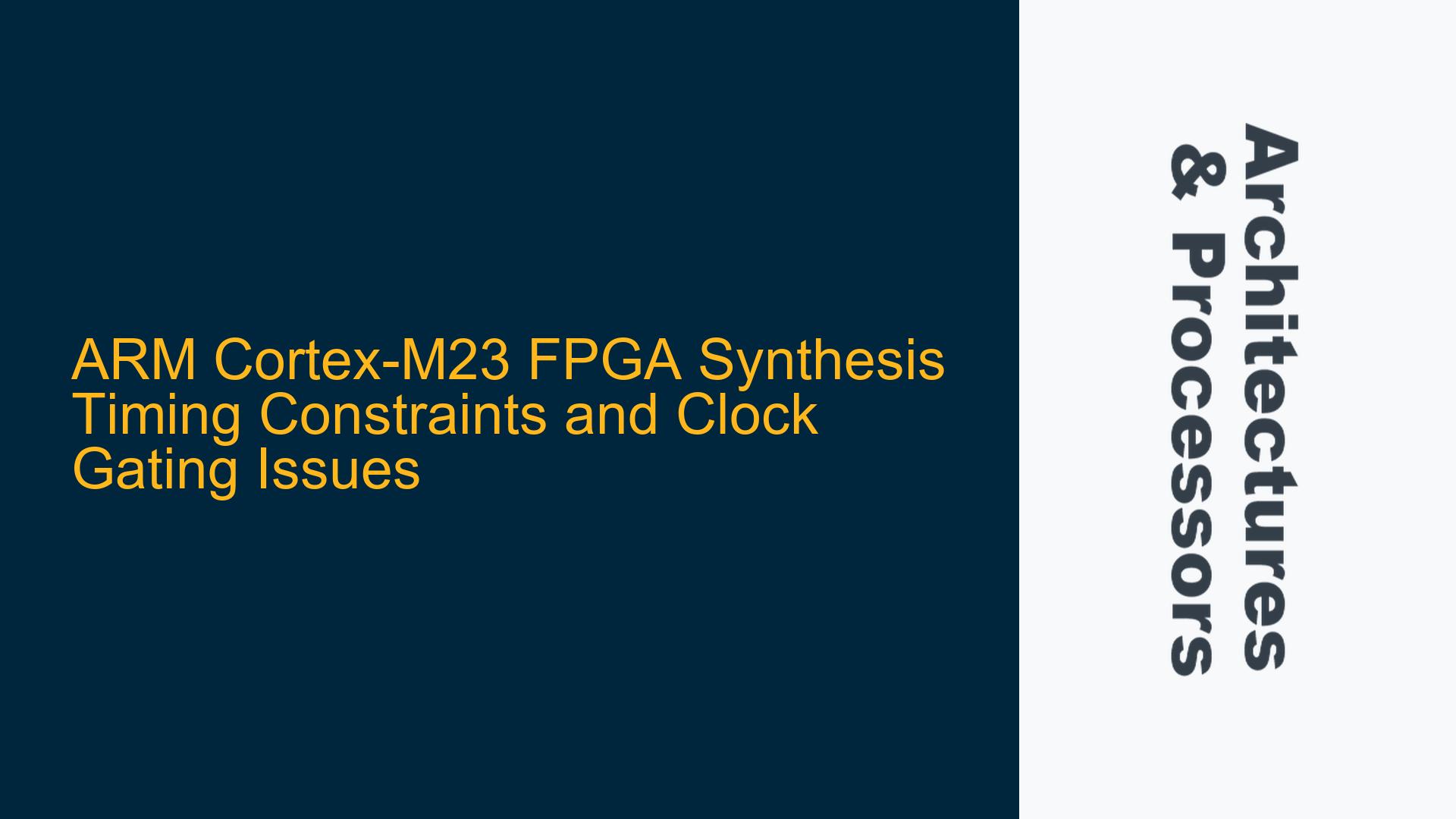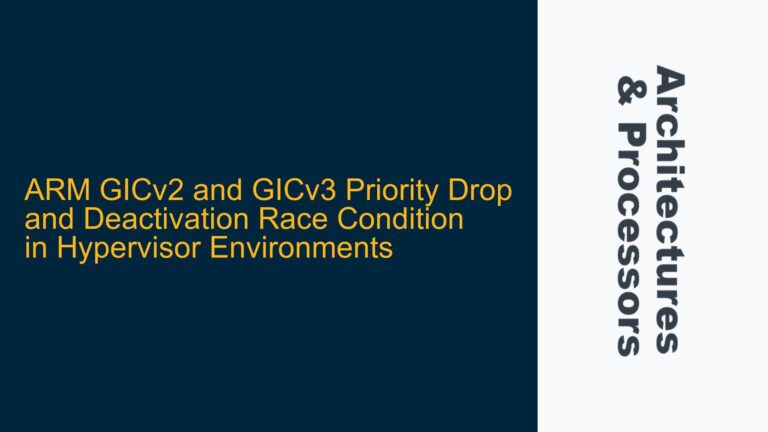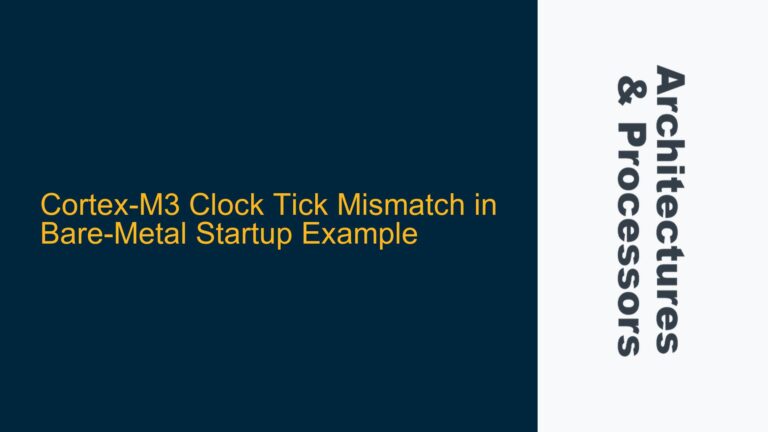ARM Cortex-M23 Timing Constraints and Clock Gating Challenges in FPGA Synthesis
When implementing an ARM Cortex-M23 core on an FPGA platform such as the Xilinx VCU118 board, meeting timing constraints at higher clock frequencies can be a significant challenge. The Cortex-M23, being a low-power, area-optimized processor, is designed for embedded applications where power efficiency and small silicon footprint are critical. However, when synthesized on an FPGA, the inherent flexibility of the FPGA fabric introduces complexities in achieving timing closure, especially when targeting higher clock speeds like 48 MHz. The issue is further compounded by the presence of clock gating, which is often used to reduce power consumption but can introduce timing violations if not handled correctly.
In the context of FPGA synthesis, timing constraints are critical to ensure that the design meets the required clock frequency without setup or hold violations. The Vivado Design Suite, Xilinx’s flagship FPGA design tool, uses these constraints to guide the synthesis, placement, and routing processes. When clock gating is removed, as mentioned in the discussion, the design may meet timing constraints at a lower frequency (e.g., 32 MHz) but fail to do so at the target frequency of 48 MHz. This suggests that the clock gating logic, while beneficial for power savings, introduces additional delays that violate timing paths at higher frequencies.
The ARM Cortex-M23 core, combined with the SSE-123 subsystem, presents a unique set of challenges due to its RISC architecture and the integration of custom peripherals. The SSE-123 subsystem, which likely includes additional logic for signal processing or security features, adds to the complexity of the design. The interaction between the Cortex-M23 and the SSE-123 subsystem must be carefully analyzed to ensure that timing paths between these components do not become critical paths that limit the overall clock frequency.
Clock Gating Impact and Timing Path Analysis in Vivado
The primary cause of timing violations in this scenario is the introduction of clock gating cells, which add latency to the clock distribution network. Clock gating is a common technique used to reduce dynamic power consumption by disabling the clock signal to unused portions of the design. However, in FPGA implementations, clock gating cells can introduce additional delays that affect the setup and hold times of flip-flops and other sequential elements. When the clock frequency is increased, these delays become more pronounced, leading to timing violations.
In the Vivado toolchain, timing constraints are defined using the Xilinx Design Constraints (XDC) file. These constraints specify the clock frequencies, input/output delays, and other timing requirements for the design. When clock gating is enabled, the tool must account for the additional delay introduced by the gating logic. If the constraints are not properly defined, the tool may fail to meet timing requirements, especially at higher frequencies.
Another potential cause of timing issues is the placement and routing of the design. FPGAs have a finite number of routing resources, and the placement of logic elements can significantly impact the timing of critical paths. If the Cortex-M23 core and SSE-123 subsystem are placed far apart on the FPGA fabric, the routing delays between them can become a bottleneck. This is particularly problematic for high-speed designs where even small delays can cause timing violations.
Additionally, the synthesis process itself can introduce timing issues if the tool is not configured correctly. Vivado uses various optimization strategies during synthesis, such as retiming and pipelining, to improve timing performance. However, these optimizations may not always be effective, especially when dealing with complex designs like the Cortex-M23 and SSE-123 subsystem. In some cases, the tool may prioritize area optimization over timing performance, leading to suboptimal results.
Optimizing Clock Gating and Timing Constraints for 48 MHz Operation
To address the timing issues and achieve the target clock frequency of 48 MHz, several steps can be taken to optimize the design and improve timing closure in Vivado. The first step is to carefully analyze the clock gating logic and its impact on timing paths. This can be done using the Vivado timing analysis tools, which provide detailed reports on setup and hold violations, as well as the critical paths in the design. By identifying the specific paths that are failing timing, you can focus your optimization efforts on those areas.
One approach to mitigating the impact of clock gating is to use a hierarchical clock gating strategy. Instead of applying clock gating at a fine-grained level, you can group related logic into larger blocks and apply clock gating at the block level. This reduces the number of clock gating cells in the design, which in turn reduces the overall latency introduced by the gating logic. Additionally, you can use low-latency clock gating cells, which are specifically designed to minimize the delay introduced by the gating logic.
Another important step is to refine the timing constraints in the XDC file. Ensure that the clock frequencies, input/output delays, and other timing parameters are accurately defined. For the Cortex-M23 core and SSE-123 subsystem, you may need to specify separate timing constraints for different parts of the design. For example, you can define a higher clock frequency for the Cortex-M23 core and a lower frequency for the SSE-123 subsystem if the latter does not require high-speed operation. This allows the tool to optimize each part of the design independently, improving overall timing performance.
Placement and routing optimizations are also critical for achieving timing closure. Use the Vivado placement and routing tools to manually adjust the placement of critical logic elements, such as the Cortex-M23 core and SSE-123 subsystem. By placing these elements closer together, you can reduce the routing delays between them and improve timing performance. Additionally, you can use the Vivado routing constraints to guide the tool in routing critical paths more efficiently.
Finally, consider using advanced synthesis techniques such as retiming and pipelining to improve timing performance. Retiming involves moving registers within the design to balance the delays along critical paths, while pipelining adds additional stages to break up long combinatorial paths. These techniques can be particularly effective for high-speed designs like the Cortex-M23 and SSE-123 subsystem, where timing is critical.
In conclusion, achieving timing closure for an ARM Cortex-M23 core on an FPGA platform like the Xilinx VCU118 board requires a combination of careful clock gating analysis, precise timing constraints, and advanced synthesis and placement techniques. By following these steps, you can optimize the design to meet the target clock frequency of 48 MHz while maintaining the power efficiency and performance benefits of the Cortex-M23 architecture.






